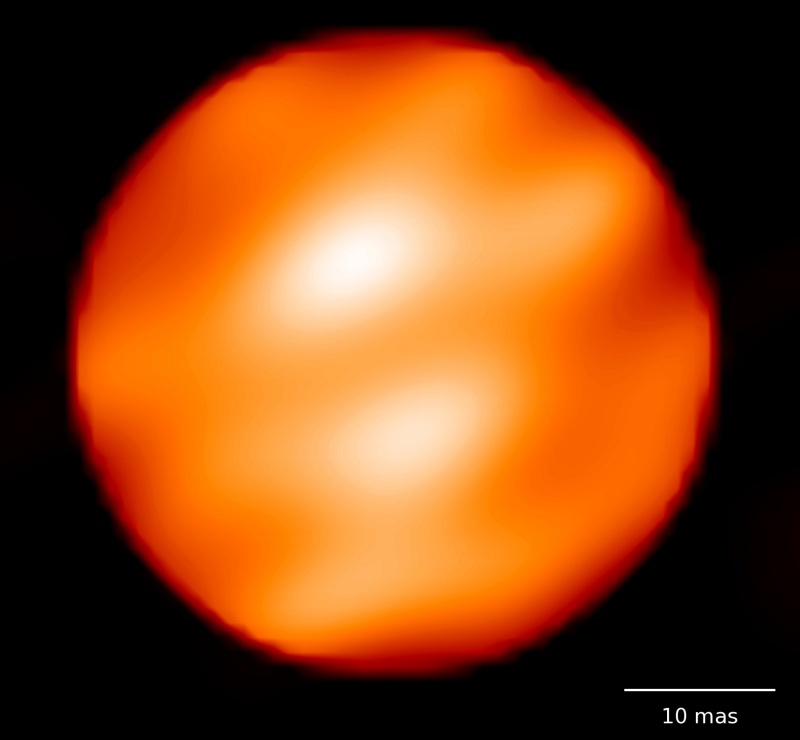Credit & Copyright: Xavier Haubois (Observatoire de Paris)
et al.
Explanation:
Betelgeuse really is a big star.
If placed at the center of our Solar System it would extend
to the orbit of Jupiter.
But like all stars except the Sun,
Betelgeuse is so distant it
usually appears as a
single point of light, even in large telescopes.
Still, astronomers using
interferometry
at infrared wavelengths
can resolve the surface of Betelgeuse and
reconstructed this
image of the
red supergiant.
The intriguing picture shows two, large, bright, star spots.
The spots
potentially represent enormous
convective cells rising
from below the supergiant's surface.
They are bright because they're hotter than the rest
of the surface, but both spots and surface are
cooler than the Sun.
Also known as Alpha Orionis, Betelgeuse is about 600 light-years
away.
Note: An
APOD editor will review astronomy images of 2009,
hosted by the Amateur Astronomers Association of New York on Friday,
January 8 at the American Museum of Natural History, NYC.
1999 2000 2001 2002 2003 2004 2005 2006 2007 2008 2009 2010 2011 2012 2013 2014 2015 2016 2017 2018 2019 2020 2021 2022 2023 2024 2025 |
Yanvar' Fevral' Mart Aprel' Mai Iyun' Iyul' Avgust Sentyabr' Oktyabr' Noyabr' Dekabr' |
NASA Web Site Statements, Warnings, and Disclaimers
NASA Official: Jay Norris. Specific rights apply.
A service of: LHEA at NASA / GSFC
& Michigan Tech. U.
|
Publikacii s klyuchevymi slovami:
starspots - interferometry - infrared - Betel'geize - krasnyi sverhgigant - sverhgigant - pyatno na zvezde - konvekciya
Publikacii so slovami: starspots - interferometry - infrared - Betel'geize - krasnyi sverhgigant - sverhgigant - pyatno na zvezde - konvekciya | |
Sm. takzhe:
Vse publikacii na tu zhe temu >> | |
